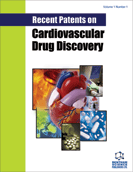Abstract
The circulating anion nitrite (NO2¯) has long been considered an inert oxidative metabolite of nitric oxide (NO). Over the last decade several studies have identified inorganic nitrite as a key player in many biological processes because it acts both as a principal storage source of NO and as a signalling molecule distinct from its link with NO. This new field of research involves the exploration of the molecular, biochemical, and physiological activities of nitrite under a variety of physiological and pathophysiological states. As a signalling molecule, nitrite is involved in various biological responses, including hypoxic vasodilation, inhibition of mitochondrial respiration, cytoprotection following ischemia/reperfusion and regulation of protein and gene expression. As a stored form of NO, since the cardiovascular system is under an important NO-mediated autocrine-paracrine control, intensive investigations involve nitrite effects on vessel and heart regulation. Recently, some authors have reported that nitrite, through both direct and indirect pathways, plays a fundamental role in vascular homeostasis and cardiac function not only in mammals but also in non-mammalian species (fish, amphibians). This review highlights some patents and the importance of the signalling properties of nitrite anion in a comparative vertebrate context for providing significant insights on “ancestral” functions of the nitrite-NO system, which may facilitate its potential use as a therapeutic agent of cardiovascular disease.
Keywords: Nitrite, Nitric oxide, cardioprotection, mammals, non-mammalian species
 15
15


